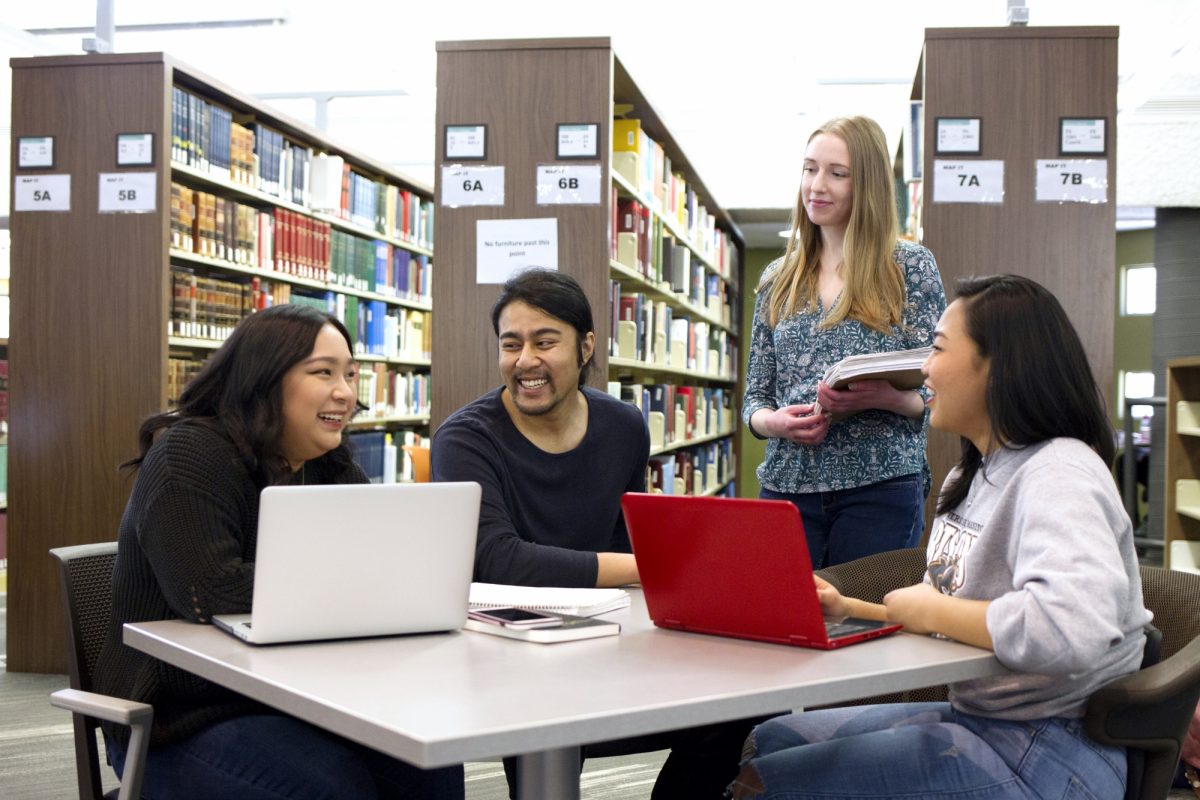
UM Digital: What do students want?
Student success in 2023 and beyond requires a strong digital strategy at UM.
Students today have been immersed in technology since they were small.
They have grown up with computers, smart phones, tablets and other digital technology. Information has always been available to them at the tap of a finger, or the click of a mouse, and online purchases can be delivered the day they are ordered.
This all shapes their expectations of a digital experience when it comes to their university education.
“Digital experience and university experience for students go hand in hand,” says Emily Kalo, who serves as a student representative on the digital strategy and steering committee.
“As a student, I expect that efforts are made to ensure that digital advancements made by the university support different types of learners in their pursuit of education,” she says.
Tanadebabari Shalom Boogbaa Lebe agrees. She’s a Faculty of Arts student majoring in art history, with a minor in religion. “As a student, my expectation is to ensure the university digital contents are user friendly and accessible to all. This would allow users to be able to select the format they wish to engage with the available content.”
Boogbaa Lebe, who also serves on the content and communications subcommittee of the digital steering committee, says that digital tools were very important during the pandemic and transition back to campus life. “I believe the new tools that were created during the pandemic, like… Yuja, and much more are still important today as it serves as a new bridge towards the past, present and future of the University of Manitoba community.”
Kalo, who recently completed her bachelor of science in psychology with a minor in business, says digital tools are useful during all stages of the post-secodary degree.
“Through digital tools, students will have the opportunity to collaborate via digital platforms, engage in inquiry-based learning, and synthesize information from multiple sources. Moreover, these tools can be used by the university to establish an online presence that makes the student body feel supported, not only when they join the Bison community, but post-graduation through research and training.”
Boogbaa Lebe finds existing digital tools useful for student success, including the UM Learn Pulse app—which keeps track of notifications and announcements about courses including grades, quizzes, assignment due dates and more—and UM Achieve—which serves as a live checklist and degree audit, and can also provide a “What-if Audit” to see what is required to switch programs if desired.
However, finding the digital tools available can be a challenge, she says. “With an ever present workload from school, work and everything else, many students, staff and potential applicants are not able to fully utilize the resources.”
She suggests developing a central hub, where students are able to access UM social media channels as well as connect to digital teaching tools like Mentimeter, Yuja, Zoom, UM Learn, UM Achieve and more.
Students are also looking for digital tools to provide accessibility features, says Boogbaa Lebe, including audio, sign language and short videos that explain the process for different tasks students need to complete.
Other digital tools students may find useful include IST chat support and Librairies “Ask Us” live chat, citation managers and generators, and other digital library tools.
The bottom line, according to both Boogbaa Lebe and Kalo, is that a strong digital strategy fosters student success for all students, during their studies and beyond.
“Digital tools can increase student success (in navigating) through their desired field of study, whether it be a diploma, certificate, undergraduate or graduate degree,” says Boogbaa Lebe.
“I strongly believe that through utilizing digital strategy, the University of Manitoba can meet higher standards of productivity and success,” says Kalo. “Digital strategy has the power to enable students during their time at the University of Manitoba and beyond as members of the workforce.”
Faculty and staff who are interested in engaging in discussions about digital best practices, technology and trends are invited to join the Digital Community of Practice.






